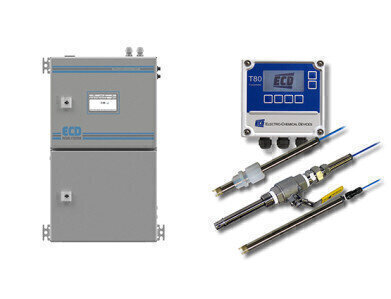Water/Wastewater
Are you trying to control lead in water supply and comply to European Union’s RoHS Directive 2002/95/EC or the EPA’s E&EC regulations?
Sep 29 2021
If you are responsible for providing clean, safe drinking water in your communities or are an engineer or technician in a business that requires industrial wastewater treatment you will discover that the S80-T80 Lead (Pb) analyser and S80-T80 Copper (Cu) analyser from Electro-Chemical Devices (ECD) is the ideal instrument to check treated wastewater.
In the US, the EPA’s Lead and Copper Rule (LCR) was updated in 2020 and is now a requisite for municipalities with lead pipes. These regulations will soon be applicable extend to educational establishments and other public facilities to protect the local populace. The US EPA recently estimated that there between 6 and 10 million deteriorating municipal water lead service lines and systems that need monitoring and upgrading to alleviate future lead contamination of the water supply.
It is common knowledge in the electronics industry that for many years water and soil contamination by lead and copper have been ubiquitous in the manufacture of semiconductors, passive components and circuit boards. Electronics manufacturers across the globe must adhere to the Restriction of Hazardous Substances (RoHS) regulations according to European Union (EU) Directive 2002/95/EC. In the US, the Electrical and Electronic Components (E&EC) Effluent Guidelines and Standards (40 CFR Part 469) was implemented by the EPA to redress the issue.
ECD developed a modular family of ion selective lead and copper analysers to help technicians at municipal and industrial plants comply with local and international regulations. ECD offer a wide range of water quality sensors for other municipal water requirements, such as ammonium, calcium, chlorine, chromium VI, fluoride, nitrate, nitrite, phosphates and sulphur. Industrial sensors and systems are also available for bromide, cadmium, cyanide, manganese, nickel, potassium, silver among others.
Once the intelligent S80 Pb ion selective sensor is connected to the T80 Transmitter, the sensor’s information is uploaded to the analyser. It then configures the displays and outputs of the transmitter to the values appropriate to the Pb sensor’s measurement parameters. The S80-T80 Pb Analyser measures lead over a range of 2.0 to 20,700 ppm at a pH level of 4-8 over a broad temperature range of 32 to 176°F (0 to 80°C) with a T90 response time of 10 seconds.
When it comes to copper monitoring, the Cu S80 Sensor is connected to the modular T80 Transmitter, with the ion-selective Cu sensor’s information uploaded to the analyser. It then configures the displays and outputs of the transmitter to the values appropriate to the copper sensor’s measurement parameters. The extremely sensitive S80 Cu sensor works over an very wide measurement range of 1.0 ppb to 6,300 pm at a pH level of 2-4 over a temperature range 32 to 176°F (0 to 80°C) with a T90 response time of 10 seconds.
The highly adaptable design of the ion-selective S80 sensor family can be used for insertion, immersion or valve retractable service. The robust design is ideal for heavy-duty municipal and industrial applications and includes several options for materials: 316 Stainless Steel, Titanium or Hastelloy. Maintenance is easy with a replaceable electronic cartridge, which can be carried out by technicians without the need for specialist tools or training.
The universal T80 Transmitters come as either single channel or dual channel instruments, enabling one analyser to measure both lead and copper. The transmitter is available in a 24 VDC or a 100/240 VAC power configuration. All versions of the T80 are provided with the optional HART® output. The line powered instruments have a single 4-20 mA output per channel and a MODBUS RTU. Other options are available including a 3-alarm relay package. The relays can be configured as alarm (set point) relays, timer activated relays or fault relays.
Digital Edition
IET 34.2 March 2024
April 2024
Gas Detection - Biogas batch fermentation system for laboratory use with automatic gas analysis in real time Water/Wastewater - Upcycling sensors for sustainable nature management - Prist...
View all digital editions
Events
Apr 22 2024 Hannover, Germany
Apr 22 2024 Marrakech, Morroco
Apr 23 2024 Kuala Lumpur, Malaysia
Apr 23 2024 Kintex, South Korea
Apr 23 2024 Edmonton, AB, Canada


















